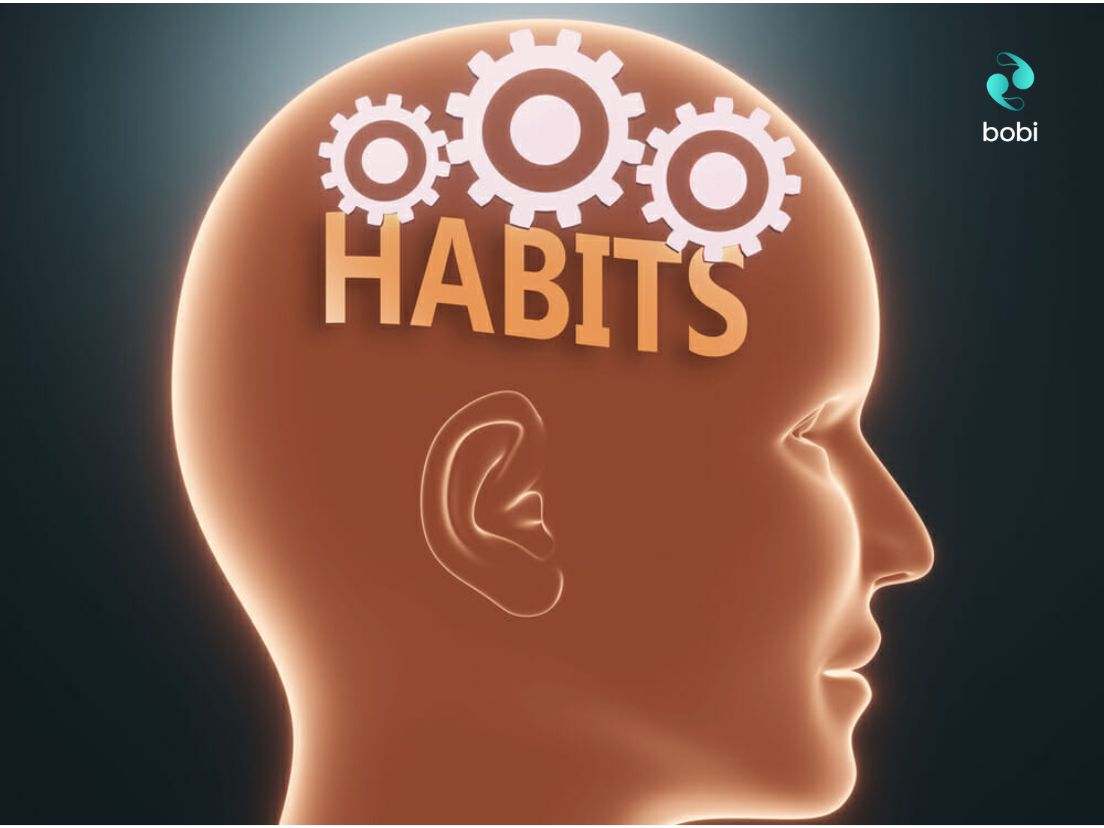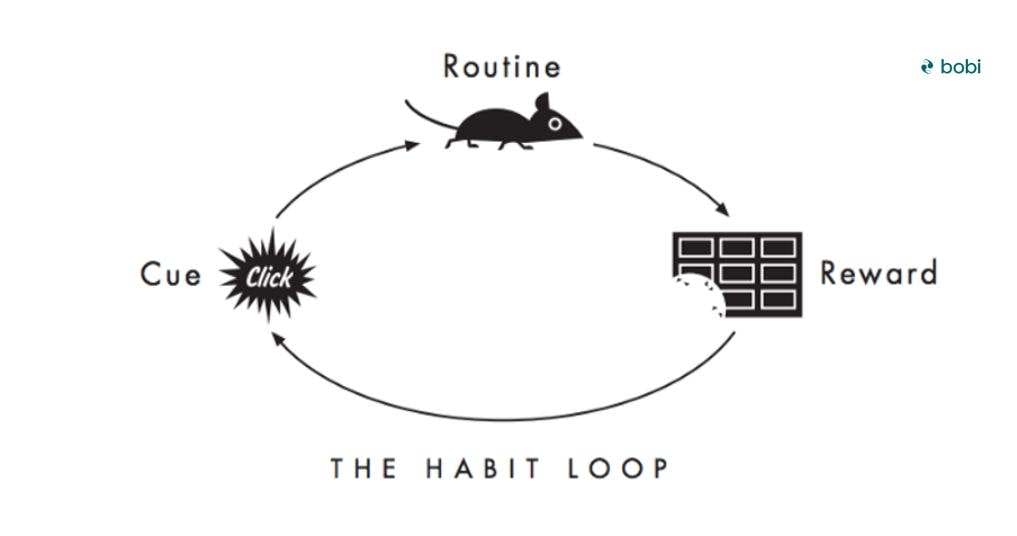Habit formation and the use of triggers

Sometimes life feels like a battle between the things we feel we should be doing, and activities we end up doing. This battle often takes a lot of our emotional energy because of related feelings such as guilt or sadness. One example of this is the feeling of guilt that many people experience after mindlessly scrolling social media for hours on end. There is an associated belief that time could be spent more productively and this creates an inner conflict or discomfort.
For most people, behaviours and routines take a familiar shape. In fact, the best predictor of future behaviour is past behaviour. According to recent estimation up to 70% of our behaviour is ‘habitual’. Humans, are indeed creatures of habit formation. Most people aim to create a life that reflects habits that support us towards goals or aspirations. How we spend time, reveals a lot about what kind of behavior our time and energy is engaged in. This is an unplanned, or conducive strategy toward advancing your life goals.
Read till the end to learn the science behind habit formation and how incorporating a perfection like “bobi” _ an innovative mindful tool in your toolkit can make all the difference.
Habit formation and the brain
When it comes to developing good habits, it’s important to understand how the brain works. The brain is incredibly complex and scientists are still learning how it functions. What we do know for certain is that particular areas of the brain are responsible for forming habits. Whether you want to break a bad habit or develop a good one, understanding the science behind habits can help you achieve your goals.
The Basal Ganglia is the part of the brain which is responsible for habits. It stores information about what you do repeatedly and helps to automate these activities so they become second nature. Habits can be both positive (such as brushing your teeth) or negative (such as smoking cigarettes).
Generally, good habits correspond with a healthy and positive lifestyle. For example, behaviours like healthy eating and frequent exercises are considered as good habits. How to develop good habits in life, however, remains a difficult proposition for many of us. We often have the intention of forming a habit but struggle to initiate and maintain the behaviour in question.
In order to develop a habit, it must first become “chunked” in the brain by repeating an action multiple times. So that it becomes automatic. This process is known as habit formation. While this may seem simple, breaking habits can be much more difficult than forming them due to their deep entrenchment in our brains.
One way to break a bad habit is through the use of triggers – reminders that prompt us to take a specific action.
How habits are learned
In 2010, a groundbreaking study was conducted that sought to understand the intricacies of how habits form and how they can be changed. The goal of this research was to gain insight into how behaviours become automatic and ingrained in daily life. Another purpose was to identify techniques that would help break unhealthy habits and replace them with healthy ones.
Since the publication of this study, the psychologists, psychiatrists, coaches, and others are taking advantage of it. They are using this information to improve the mental health of millions of people around the world. The implications of this study are far-reaching. It has helped to form an understanding of “habit loops” and revealed the psychological aspects behind habit formation in humans.
This research, led by Phillippa Lally, showed that it takes an average of 66 days for a habit to become automatic.
This means that once a behaviour has been repeated for 66 days in a row. It will become part of one’s daily routine without any conscious effort or thought. The findings of this study greatly contribute to the understanding and treatment of mental health issues related to habits. Therapists can now use this knowledge to help their patients break unhealthy habits or create healthy ones. Especially they teach them how to do this through the use of triggers.
Habit formation and the use of triggers
The use of triggers, also known as cues, to form habits has become a popular method for creating positive behaviour change. A trigger is simply something that initiates the automatic urge to complete a habit. For this, start with small and certain cues or reminders. Consequently, you’ll see incremental modifications until you form a desired habit. Once the change is made, this can lead to greater self-awareness and personal development. Moreover, it leads to improved general well-being.
Triggers are powerful tools if used correctly, and should be viewed as fundamental to facilitating habit formation.
Figure extracted from the book “The Power of Habit”, Charles Duhigg, 2012.

In his New York Times bestselling book Atomic Habits, James Clear identified five primary ways a new habit can be triggered: time, location, preceding event, emotional state, and other people. Clear provided an example of using emotional state, and more specifically an experience of stress, as a trigger for him to engage in breathing exercises.
Visual and tactile triggers for habit formation
Visual reminders are highly effective triggers for developing habits. One reason for this is that visual reminders prompt you to start a behaviour. Starting the targeted behaviour is often the most difficult aspect of the process of developing consistent practice. Numerous examples of effective visual reminders, such the use of ‘post it’ notes, show the value of using this type of cue.

Tactile triggers can act in an even more powerful way by bridging the gap between knowing what to do and actually doing it. This is the secret to bobi’s effectiveness as a personal breathing coach. bobi represents both a visual and tactile cue that can be placed, or carried, in a convenient and accessible manner.
Placing bobi on a bedside table is a highly effective way to develop a good breathing habit. The habit is formed through repeated use each morning or evening, as part of a bedtime – or waking – routine.
Perhaps the most important aspect of forming a habit is the reward. Rewards are essentially the sense of gratification or satisfaction we feel after performing the action. For bobi, the reward is the a) sense of emotional comfort and b) experience of calm that is derived after engaging in the breathing exercises.
Final Words
The benefits of forming a set of healthy habits are often overlooked. Individuals who lead healthy lifestyles have often layered good habits upon each other. For most of us, the best foundation to forming and maintaining a healthy lifestyle starts with proper breathing. This is the one habit we cannot afford to neglect. bobi is your key to unlocking the door to a healthy happy life with deep controlled breathing, that helps develop positive habits.
